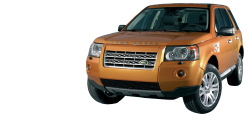
|
|
| Home · FAQ · New Posts · My Posts · PMs · Search · Members · Members Map · Calendar · Profile · Donate · Register · Log In |
 | Home > Off Topic > Haldex and other 4x4 Principles |
 
|
|
|
| IanMetro Member Since: 11 Sep 2017 Location: Somerset BS21 Posts: 2763  
|
Haldex gen 4 FL2 - MY11 onwards
|
||
|
| MartynB Member Since: 08 Aug 2011 Location: Currently Rootless ! Posts: 1761  
|
My CVT Outback is one of the smoothest , quietest , cars I’ve driven . In all scenarios where I’d take a car that I didn’t want to damage the AWD system has been excellent on road tyres .
|
||
|
| IanMetro Member Since: 11 Sep 2017 Location: Somerset BS21 Posts: 2763  
|
A site that references Land Rover and other 4x4 systems.
|
||
|
| IanMetro Member Since: 11 Sep 2017 Location: Somerset BS21 Posts: 2763  
|
A Brief History of Haldex
|
||
|
| IanMetro Member Since: 11 Sep 2017 Location: Somerset BS21 Posts: 2763  
|
From the FL2 Repair Manual
|
||
|
| IanMetro Member Since: 11 Sep 2017 Location: Somerset BS21 Posts: 2763  
|
Resurrecting old thread
|
||
|
| jules Member Since: 13 Dec 2007 Location: The Wilds of Warwickshire Posts: 4566  
|
that's a very useful site - cheers |
||
|
| AT1963 Member Since: 23 Nov 2021 Location: Leicester Posts: 235  
|
Thanks for sharing...good info |
||
|
| p_gill Member Since: 06 Dec 2011 Location: USA Posts: 1219  
|
I've always been impressed by my Gen 3 starting out in a slippery situation. I have never found myself in a situation that made me wish for more torque to be transferred to the rear Tyres. I do understand that the transmission and final drive will multiply the Torque and that the Haldex will divide that Torque between the front and rear axel. So for my Petrol powered 3.2 the 369 Ft * lbs is perfectly adequate. For the Diesel owners with more torque your experience may not be the same (let me know). For reference if the Haldex isn't up to the task then an aggressive start on a slippery surface will behave like a front wheel drive vehicle instead of an all wheel drive vehicle. Has anyone had a Gen 3 and a Gen 4 and did you notice a difference? Take care Paul Edit: The Haldex is before the final drive so the torque to the Tyres is still multiplied by the final drive. For my 6 speed Auto 3.2 First gear is 4.15:1 235 Ft * Lbs * 4.15 = 975 split 50/50 = 487 (Gen 3 can't quite keep up) Second gear 2.37:1 235 Ft * Lbs * 2.37 = 556 split 50/50 = 278 (No problem for Gen 3) I think the Snow Mode starts in 2nd gear and my Gen 3 can maintain 50/50 a torque split in 2nd gear and higher gears. Edit 2.0 For my Petrol 3.2 the Gen 4's 1100 Ft * Lbs is only meaningful if I am planning to send 100% of the Torque to the rear wheels. I'm not sure that the Haldex can accomplish this Last edited by p_gill on 5th Feb 2022 2:31 am. Edited 2 times in total |
||
|
| IanMetro Member Since: 11 Sep 2017 Location: Somerset BS21 Posts: 2763  
|
Before my FL2s, I had a large 2ltr turbo FWD estate. Even though it had traction control I had to be very careful from standstill/low speed, to gradually apply the throttle, otherwise I got embarrassing wheel spin.
|
||
|
 
|
|
| All times are GMT + 1 Hour |
< Previous Topic | Next Topic > |
Posting Rules
|
Site Copyright © 2006-2024 Futuranet Ltd & Martin Lewis
![]()

